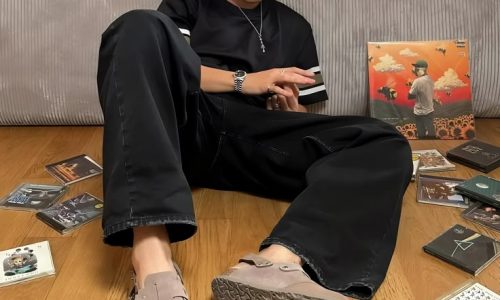
Colors, Cuts, and Consciousness: Fashion’s 2025 Direction
Introduction
Fashion in 2025 has moved beyond superficial aesthetics. It is a force powered by innovation, self-awareness, and ethical transformation. As the industry navigates rapid change, a bold new direction emerges—one defined by vibrant colors, reimagined silhouettes, and an unwavering commitment to conscious practices. “Colors, Cuts, and Consciousness” is more than a catchy phrase; it embodies the essence of today’s fashion revolution. From runways to retail shelves, every piece tells a story not just of style, but of responsibility and vision.
The Power of Color: Bolder, Smarter, Deeper
In 2025, color takes center stage in fashion’s narrative. Designers are pushing the boundaries of traditional palettes by embracing emotionally intelligent hues that provoke connection and reflect identity. Unlike previous years where trends revolved around minimalism or seasonal tones, this era is defined by chromatic storytelling. Shades of electric cobalt, regenerative green, and solar coral symbolize optimism, resilience, and renewal. Color forecasting no longer relies solely on aesthetic appeal but considers psychological impact, sustainability of pigments, and the cultural stories they carry. Fashion houses are also integrating technology to create dynamic garments that change color in response to mood or environment, offering personalized experiences at the intersection of science and style.
Reconstructing Silhouettes: Redefining Fit and Flow
Cutting-edge fashion in 2025 redefines what it means to dress the body. The once rigid constructs of tailoring give way to adaptable forms that prioritize inclusivity, movement, and freedom. Garments are no longer created with a single archetype in mind; instead, they’re designed to celebrate diverse body shapes and gender expressions. Modular clothing that can be zipped, buttoned, or tied in multiple ways is gaining momentum, empowering individuals to personalize their looks. Oversized pieces coexist with sculptural elements, combining comfort with architectural drama. Technology plays a role here, too—smart textiles adjust to climate changes, allowing for responsive, seasonless dressing. Every cut speaks to versatility, comfort, and an avant-garde reinterpretation of the human silhouette.
Sustainability as Standard: The Conscious Evolution
Fashion in 2025 is consciously designed from the ground up. Sustainability is no longer a niche—it’s the standard. Brands invest in circular economies, using upcycled materials, regenerative agriculture, and biodegradable textiles. Transparency across the supply chain becomes non-negotiable, with digital tags that track a garment’s lifecycle from origin to recycling. Designers consider every stage of production, questioning water usage, labor ethics, and carbon footprint. Additionally, fashion education evolves to integrate environmental science and ethical sourcing into design curricula. Shoppers are more informed and demand accountability, influencing labels to adopt open practices and purpose-driven missions. Consciousness, in this context, is not only ecological but also social—promoting diversity, fair wages, and community collaboration.
Technology and Textile: The Smart Fabric Era
Advancements in textile innovation define the tactile experience of fashion in 2025. Fabrics embedded with microchips or nanofibers now offer interactive capabilities, such as tracking hydration levels, monitoring posture, or adapting to temperature. Beyond function, these smart fabrics offer aesthetic fluidity. Garments glow, shift, and shimmer, providing a futuristic yet elegant alternative to conventional materials. Designers blend organic and synthetic fibers to produce hybrids that are both resilient and expressive. Tech-integrated textiles enable real-time customization, allowing users to update prints or adjust fits via smartphone apps. Fashion becomes both wearable tech and art form, illustrating the harmonious fusion of form, utility, and imagination.
Craftsmanship and Cultural Identity: Global Inspirations
In the globalized yet locally rooted fashion of 2025, authenticity matters more than ever. Artisanship resurges as designers draw inspiration from cultural heritage and indigenous practices, honoring traditions while reinterpreting them through a contemporary lens. From intricate embroidery in South Asia to handwoven silks in West Africa, traditional techniques gain international recognition and ethical demand. Collaborations with local artisans foster economic empowerment and protect fading crafts. Cultural storytelling shapes fashion’s new vocabulary, one rooted in respect, representation, and reverence. This is not cultural appropriation—it is cultural celebration. Consumers value origin and narrative, seeking garments that echo their values and expand their worldview.
Retail Reinvented: Experiential, Digital, and Personal
The retail experience in 2025 transcends the transactional. It is immersive, digital-first, and deeply customized. Augmented reality fitting rooms, AI-powered stylists, and virtual storefronts redefine shopping, merging physical spaces with the metaverse. Brands curate personalized journeys, offering product suggestions based on individual behavior, environmental context, and emotional states. Direct-to-avatar fashion flourishes in gaming and social platforms, creating a parallel economy for digital garments. At the same time, brick-and-mortar stores transform into community hubs where fashion becomes an experience, not just a product. Sustainability continues here too—with carbon-neutral packaging, on-demand production, and recycling kiosks embedded in-store. The future of retail is dynamic, intuitive, and aligned with both technological and ecological consciousness.
The Rise of Emotional Dressing: Style with Soul
In 2025, dressing becomes an act of emotional expression and healing. People are choosing outfits not just for functionality or aesthetics, but to influence or reflect mood, identity, and intention. Chromatherapy and mood-enhancing textiles are emerging trends, infusing garments with calming scents, tactile comfort, and psychological balance. Self-care is integrated into style, as clothing evolves into a wellness tool. This emotional dressing trend redefines the connection between body and garment, encouraging mindfulness in fashion choices. Emotional resonance becomes a key design metric, and brands are encouraged to explore how their collections make people feel—not just how they look.
Conclusion: Fashion With a Future
As we journey through 2025, the fashion industry is undergoing its most conscious transformation yet. Driven by bold colors, innovative cuts, and deeply rooted values, clothing becomes a medium for storytelling, self-awareness, and social change. What we wear is no longer a superficial statement but a dynamic expression of identity, ethics, and future readiness. The evolution of style is not just about aesthetics—it’s about purpose. Fashion in 2025 is fashion with a future, dressed in integrity, imagination, and impact.


